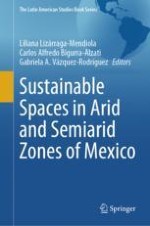This book portrays interesting aspects of communities where livability, comfort, materials, and traditional construction procedures are part of the cultural context. The book is focused on the importance of incorporating environmental criteria and sustainable infrastructure to contribute to the Sustainable Development Goals and to improve the population's quality of life in arid and semi-arid zones of the Global South. This book constitutes an introduction to the sustainable construction of livable spaces for undergraduate and postgraduate students, although professionals of the construction industry and urban policy makers will also find this work valuable.
